To Hell and Back Again: My Black Metal Story (Norway 1991-1993)
by Varg Vikernes
150 pages, Ancestral Cult Productions, $13
Tags: Black Metal, burzum, Euronymous, mayhem, multiple stab wounds, norway, varg vikernes
To Hell and Back Again: My Black Metal Story (Norway 1991-1993)
by Varg Vikernes
150 pages, Ancestral Cult Productions, $13
Tags: Black Metal, burzum, Euronymous, mayhem, multiple stab wounds, norway, varg vikernes
Most popular music memoirs fall into either criticism or worship of the phenomenon of popular music itself, focusing more on the fan response and megalomania of musicians than the reasons behind the creation of this music. The Serpent and the Pentagram takes a different approach.
2 CommentsTags: aris shock, Black Metal, necromantia, the magus
Fathers, Brothers, and Sons: Surviving Anguish, Abandonment, and Anthrax
by Frank Bello
Rare Bird Books, 206 pages, $28
Almost all popular music interviews and autobiographies address the how more than the why which disappoints the teenage fan in all of us. Frank Bello attempts to express the why with his story of a broken childhood and how it partially led him to being in speed metal band Anthrax.
2 CommentsTags: anthrax, frank bello, Speed Metal
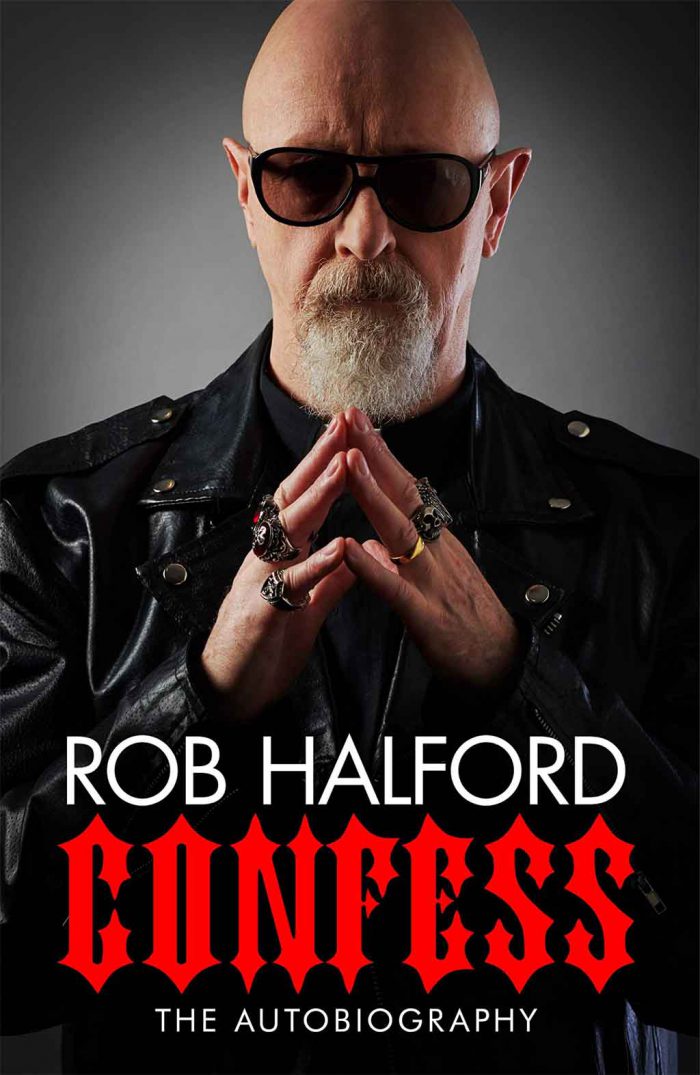
Life assembles itself from opposites; what is a strength in one area is a weakness in another. Confess: An Autobiography serves as a great history of Rob Halford, but misses what his audience would like, which is a history of Judas Priest in which Halford discusses his own progress as well as that of the band.
5 CommentsTags: Heavy Metal, judas priest, NWOBHM, rob halford

Andrzej Sapkowski’s “The Witcher” series has seen itself appropriated and simplified in the form of a ridiculous TV show and movie that never garnered much respect in its native Poland and has been heavily critiqued by Sapkowski himself. The books find themselves once again simplified and denied of their essence in the form of three large budget video games that do attempt to bring to life the world of the series, but gameplay, endless superfluous content and the lack of understanding from the writers hinder this. Fortunately we are blessed by a truly transcendent series of books that despite the mainstream’s attempts at commercializing them remain unaffected in their message and expression. Enter “The Last Wish” which is the first book of a majestic saga that soars above the common man’s need for digestible media.
12 CommentsTags: Andrej Sapkowski, Classic fantasy, The Last Wish, The Witcher
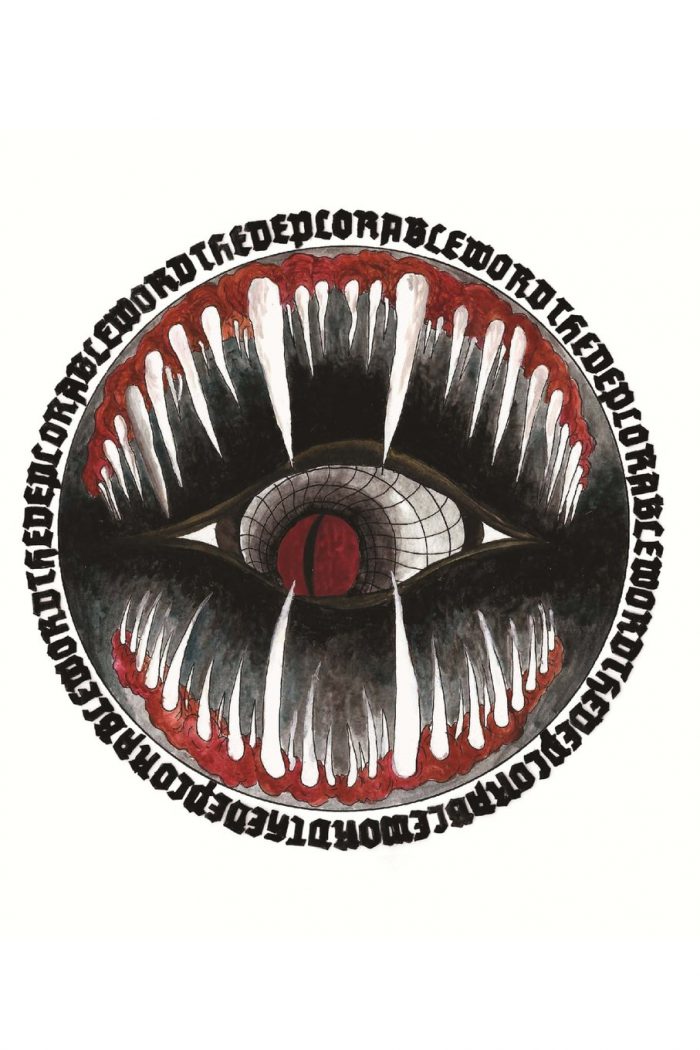
Very few works that presume to connect human beings with energies or entities come across as applicable. More often than not, a lack of honesty would appear to be disguised behind impractical demands that defeat the purpose of a magical working as a shortcut. Despite what detractors have had to say on the matter, Martinent Press has excelled in its publishing of books that the reader can take as they come. A reader can survey a relatively cheap copy of any of the titles and judge the contents therein by what they propose, the author’s revealed character in words and style, and whatever insights they are revealing. Interestingly, Martinet Press leaves it to the public to do their own sifting, allowing no-nonsense heavy-weights like Tempel ov Blood Liber 333 lie on a bookshelf beside the more compilatory and derivative works like A.A. Morain Scithain. In the case of the present booklet, keywords that come to mind upon ‘meeting’ the writer(s)’ character on paper are sincere and honest, energetic and powerful, juvenile and wasteful, obsessive and unstable. But this is only a sympathetic, literary and psychological appreciation, of course, and nothing else.
We find that sincerity and directness is, in fact, at the forefront of the authors’ concerns here, the main concern being the quick leading of the interested individual to the right state of mind: towards at least an aural and psychic clarity regarding alien expectations. As is common within the grimoire tradition, The Deplorable World juxtaposes different literary genres without any transitioning device. The only criteria to the inclusion of each of these parts is what they may bring the reader in terms of an apprehension of the topic at hand. The progression from one section to the next shows a plan designed to implicitly (secretly) address diverse mental requirements in the minds of those seeking after content. However, those looking for fetish antiquary items or page after page of turgid and inconsequential “lore,” with no relevance or substance other than the mirage of words, will have to invest at least several hundred dollars more.
And so, the work opens up with a rather tepid work of light fiction the only value of which is providing a verbal illustration of the situations and atmosphere . Fortunately, the fiction is the first and the weakest section of this publication. The authors proceed from there to references of the Abyss in ancient lore, in a compact section with more substance and referential value than entire books by other, more prominent “occult authors.” Towards the middle, we are presented with plain and simple descriptions of the relevant cosmos and entities, doing away with poetics or any of the masturbatory word diarrhea that is the staple of prominent “occult publications.” Finally come the procedures themselves, starting from simple meditation techniques, advancing towards libations and communion, on to astral exploration and full-out, blood-sacrifice portal opening.
“Magically relevant or GTFO!”
Symbols and procedures lean towards stupor or frenzy, without necessarily naming them so. To those who would get discouraged by the rather unnecessary —even detrimental— opening work of fiction, the rest of the booklet provides concrete working after concrete working, the requirements of which are mainly the capacity for mental focus and a willingness to bend a conventional grasp of sanity in thought and action. The mental investment demanded demands energy, energy that is directed and consumed. Some may leer at the prospect, but they are also those who would not see beyond the intermittent purposelessness that plagues the path of any discipline which develops practical abilities before intellectual understanding or “knowledge.” In this way, we may see in The Deplorable World a potent handbook to develop a raw, focused connection to a cosmic darkness that is ultimately, despite our poetic allusions, beyond explainations.
There is here an unquestionable obsession with violence, that is at the same time juvenile and uninterested. In this, it at once complements and contrasts the involved insights that Georges Bataille derives from what he terms ‘sensuality’. And while this unthinking and ultimately self-defeating drive towards destruction, abandonment and forgetfulness constitutes the praxis, it could be argued that it will remain short of what an evolving human being can become psychologically, physiologically and psychically. For where it used to be a facilitator, there is a point where shock becomes a crutch. If instead of utilizing the capacity for self-shock and channeling towards increasingly potent and predictable results, the practitioner falls into a mindless and never-ending one-upmanship game of inner destruction beyond utility and for their own sake, these methods may instead become a glaring obstacle for the individual’s growth if not understood and assimilated. That such fixation with what the practitioner assumes to be the ultimate “preternatural” reality, and that such obsession with acts of cruelty and violence, can be experienced but transcended into a dynamic exploration and development of the totality of being, is perhaps a first key towards true attainment, or what some call adepthood.
1 CommentTags: constantine charagma, erica frevel, martinet press, the deplorable world
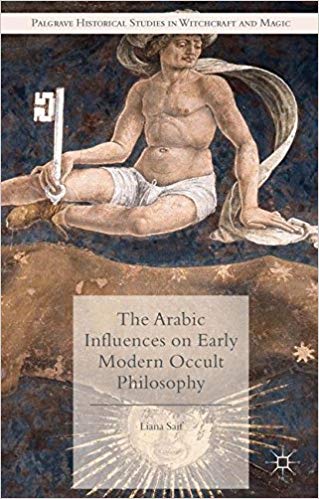
The present book explores different mystical and metaphysical ideas related to astrology and magic that fall under a philosophical framework that assigns the living cosmos a hierarchical order of influences that make the mechanics of the cosmos possible. The works studied here are chosen for their inherent worth, but here also for their influence over the developments in Western Occult Philosophy of the Medieval and Renaissance periods. They are termed ‘Arabic’ by virtue of the language the authors wrote the works in, although some of these authors were not themselves Arabs at all. Furthermore, Liana Saif strikes a very insightful balance in that she strives to truly understand this tradition of occult thought from the inside out, as a coherent system of thought from its own vantage point and not in relation to later philosophies.
It must be highlighted that the Arabic treatises explored in this book are of a ‘rational’ character, even if treating of magic and astrology. As Alfred Ayer —who would nonetheless be against notions of magic, said regarding systems of thought— explained in Language, Truth and Logic about philosophy and metaphysis: the only requirement for them to be valid is coherence. From then on, the connection that a system of thought has to ‘reality’ has to do with how its accuracy is gauged, and so how it is applied to achieve any kind of results. In the case of these Arabic influences, “knowledge of resemblances, analogies and sympathies,” played the role of mechanistic causality in these system, even though the system was treated as a living organism in which forces —dynamis, according to Georg Luck— are spirits with volition in a graded hierarchy of beings of descending intellectual power and self-awareness.
Astrology is said to be first of all dependent on a knowledge of astromony. But whereas astronomy attempts only a mathematical calculation of the movements of the heavens, astrology seeks to find causal relations between said movements and the states of beings on our ‘sublunar’ plane (basically, the planet Earth). To this end, many a creative rule of resemblance, sympathy and anipathy is applied, but with the ultimate end of finding a sense, not of feeding superstition. If the conjured explanation is unable to provide a satisfying unifying pattern of ideas with the actual manifest movements, then it is invalid. Furthermore, and most obviously, if within the parameters of the worldview no actual predictions or results are achieved from any presumed astrological knowledge or magical working, these are not supposed to be valid either. It is in this sense that astrology and magic are treated rationally, from its own chosen metaphysical premises.
Liana Saif tells us that explanations based on “causality,” even those that are now deemed “scientific,” do not in any way invalidate interpretations of a spiritual or semiological kind. In this regard, Carl Jung has stressed that human reality lies within phantasia, and neither in the purely physical nor the mental. What this means is that we percieve and act in a world that comes together between the two, and which phantasia eventually follows its own rules and patterns independent yet fed by the upper and lower worlds of the physical and the mental, correspondingly. And so, if a consistency of signs and meanings is achieved from an observation of nature in relation to the human mind and its ability to perceive details, then the efficacy of magic has thereby been attested.
The book itself is pleasant to read in many respects, not least of which is the fluid prose which, while academic in tone, is not bogged down by a lack of style or attention to clarity. What makes the present work powerful and congruent in that respect is that the author uses all modern advantages of systems and knowledge in the service of better understanding and explaining the worldviews and metaphysical propositions of these medieval Arabic thinkers on occult philosophy. It is exciting and fulfulling to read Liana Saif move seemlessly into the mentality of medieval occult thought with full attention and in an apparent “inner comprehension,” even as if she held a stake in this alternate “world,” only to then slide out and provide respectful commentary in the light of modern academic research.
17 Comments“…the natural way of doing this is to start from the things which are more knowable and clear to us and proceed towards those which are clear and more knowable by nature.”
—Aristotle, Physics
Tags: 2015, liana saif, Palgrave Historical Studies in Witchcraft and Magic, the arabic influences of early modern occult philosophy
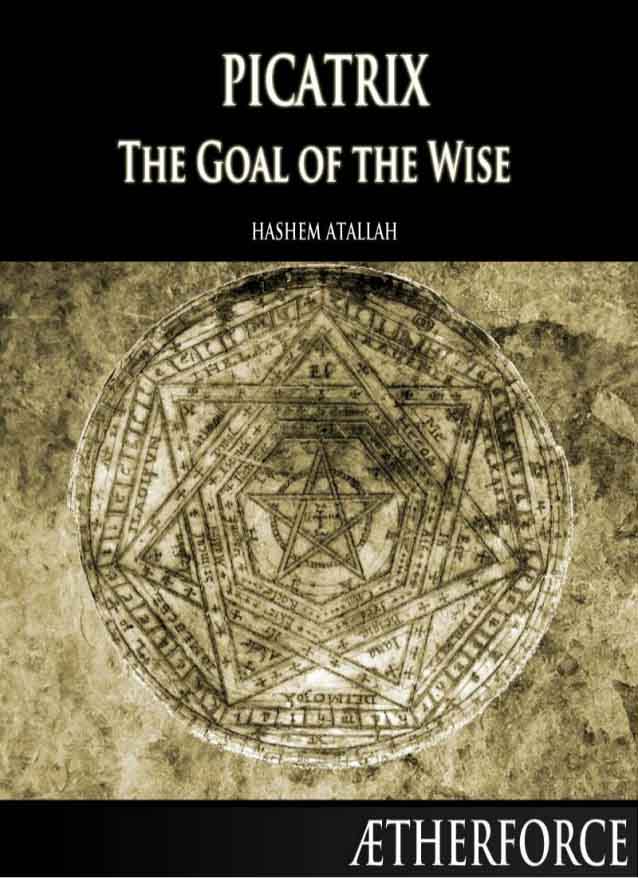
The Ghayat al-Hakim, “The Goal of the Wise,” was originally written in Arabic around the year 1000 C.E. and made famous throughout Europe by its Latin translation titled Picatrix. The importance of the text is paramount to those who would inquire into the true roots of not only modern occultism of the European lineage, but even of Western mysticism (and hence also theology) as a whole —if the esoteric roots of propagandistic exotericism are sought. While most English editions are based on the different Latin texts, there is an edition presumably translated directly from the original Arabic by Hashem Atallah and edited by William Kiesel. This latter is precisely the edition to which we will be making reference in this brief, amateur reccount of what is presented in the first chapter of Book I.
The first chapter of the Ghayat al-Hakim is an essay dealing concisely and to the point with the subject of knowledge originating in wisdom. All wisdom starts by recognizing the One Being, from whom everything else takes their “truth” and their properties, yet It is not limited by any set of properties nor does It derive Its truth from anywhere else. Wisdom appears to be directly granted by Allah, and which particular conception of wisdom appears to be defined as an insight into the abstract workings of reality. From wisdom stems the ability to obtain knowledge through different kinds of disciplines, also referred to as “arts of wisdom.” The essay ends by stating how philosophers, those seeking knowledge, develop themes with subjects and predicates, and by the use of informational statements that are either true or false.
Of the One Being it is said not only that everything else derives essence, reality and identity from It, as in the emanations that later Jewish and Christian mystics would derive, but also that It is “all-knowing” of these things. More precisely, the One Being is all-knowing of the different ranks of all beings. That there are those who come first and who themselves have no cause, have effects under them. That there are those in the middle who have causes and effects. And finally, that there are the last, who are the end of the chain, having causes but no effects. Interestingly, it is said that these ranks are not fixed, but that the last in this hierarchy of beings may ascend until they reach the first. The ranks serve the mechanics of emanation, by the first being able to understand how order is imparted, and then this understanding moving downwards until all of manifestation accepts it.
Of wisdom it is said that it has three subjective characteristics. The first is that it “grows and never vanishes.” The second that “it chastises and disciplines.” And lastly, that “it will not approach anyone who is not interested in it.” Simple words, and mayhaps a bit quaint, but they are as an open book to read for those who want to gain a basic yet heartfelt understanding of how to start to think about things. To seek wisdom, “is an obligation, as well as a virtue.” From here, knowledge only comes as a conclusion from work inspired or motivated by wisdom, which is itself obtained only as grace from the Allah, to whom all things are subject. We can therefore extrapolate that it is inspiration as fuel of the will comes from an holistic awareness of a reality in which we are contained, and into which we only gain insight by the adoption of a higher view, and an openess to the numinous. That it is clearly stated that Allah is also able to visit ruin upon any one It wishes, is quite clearly the sinisterly in this un-stated, and only apparent dichotomy.
“I have only created djinn and men so that they may serve me.”
“And not I have created the djinn and the mankind except that they worship Me.”
—Sura 51, verse 56
Knowledge is consequently obtained through the previously mentioned arts of wisdom. These arts are said to be religious, natural, theological or logical and analytical. The arts are obviously philosophical in character, but they are not only different lines of inquiry, but rather different “methods.” The religious art includes not only “revelation” (what can be glimpsed from scripture), but the practice of asceticism, and the study of jurisprudence, and hence of proper human behavior, relations and ethics. The natural art includes observations of the celestial (astronomy and astrology?), the world and the universe. The latter classification revealingly includes the study of evil as part of the natural art. It is interesting that what is here called the theological art is not confounded, as the Christians do to this day, with philosophy proper itself, and is rather abscribed to the “knowledge of the self and Creator”—perhaps what we today would consider Jungian psychology. Finally, and apparently as a fourth level of concrete understanding, comes the logical and the analytical, through which clear and unequivocal statements and derivations are made in the development of ideas.
Thus comes to an end the first chapter of Book I of the Ghayat al-Hakim, The Goal of the Wise.
23 CommentsTags: arabic, book 1 chapter 1, ghayat al-hakim, picatrix
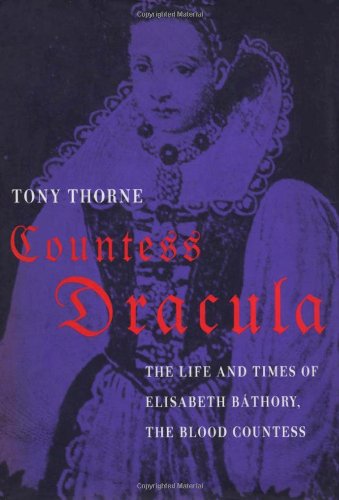
The myth of Elisabeth Bathory is known to us in its most twisted forms, filtered through years of mysoginistic prejudice and augmented further by gothic sensibility for horror that fascinated the minds of the 19th century. Little understood are the full cultural and historical context of the region and its political dynamics. Little is it taken into account that all records of what happened were taken under peculiar circumstances by those vested in Bathory’s demise, and that greater political forces were at work to bring her whole family down. Nor is it a neglible detail that accounts by primary servants of Bathory were extracted by the hand of a magister tortararum especially trained in the ‘art’, and that these same tortured servants were summarily executed after these ‘confessions’ were given.
(more…)
Tags: 1997, black propaganda, countess dracula, evil literature, hapsburg, show trials, tony thorne, witch trials
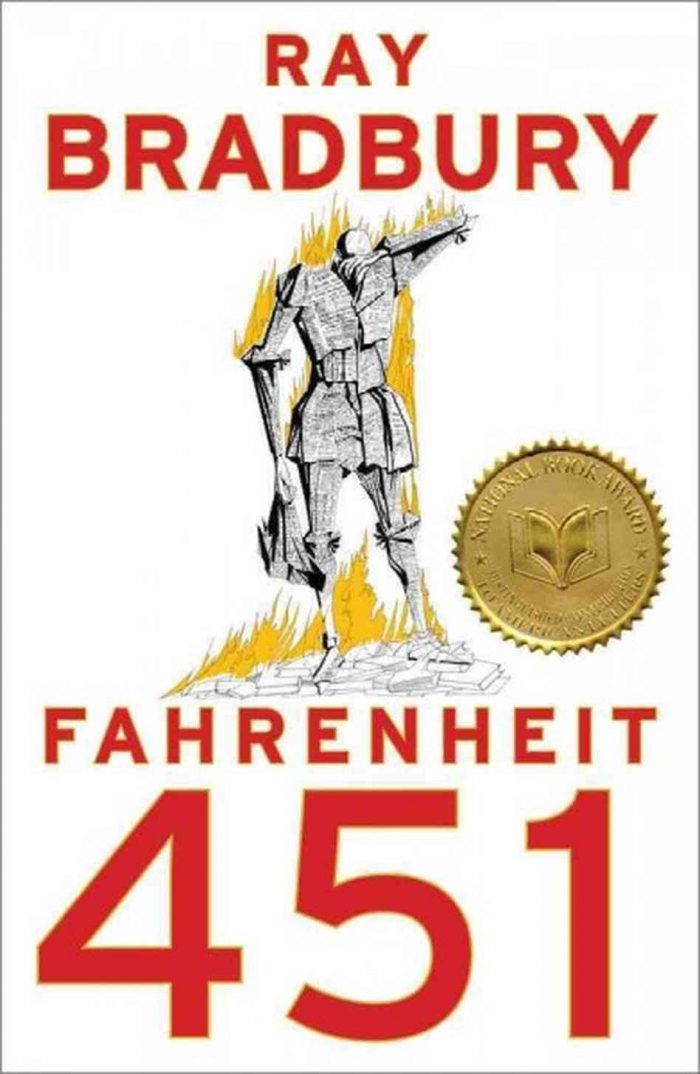
I found it hilarious to see the book sales of George Orwell’s 1984 skyrocket just after the election of President Donald Trump. (more…)
6 CommentsTags: censorship, Death Metal Underground under siege, decline and fall of western civilization, dystopia, end times prophecy, Fahrenheit 451, h.p. lovecraft, historical revisionism, Ray Bradburry